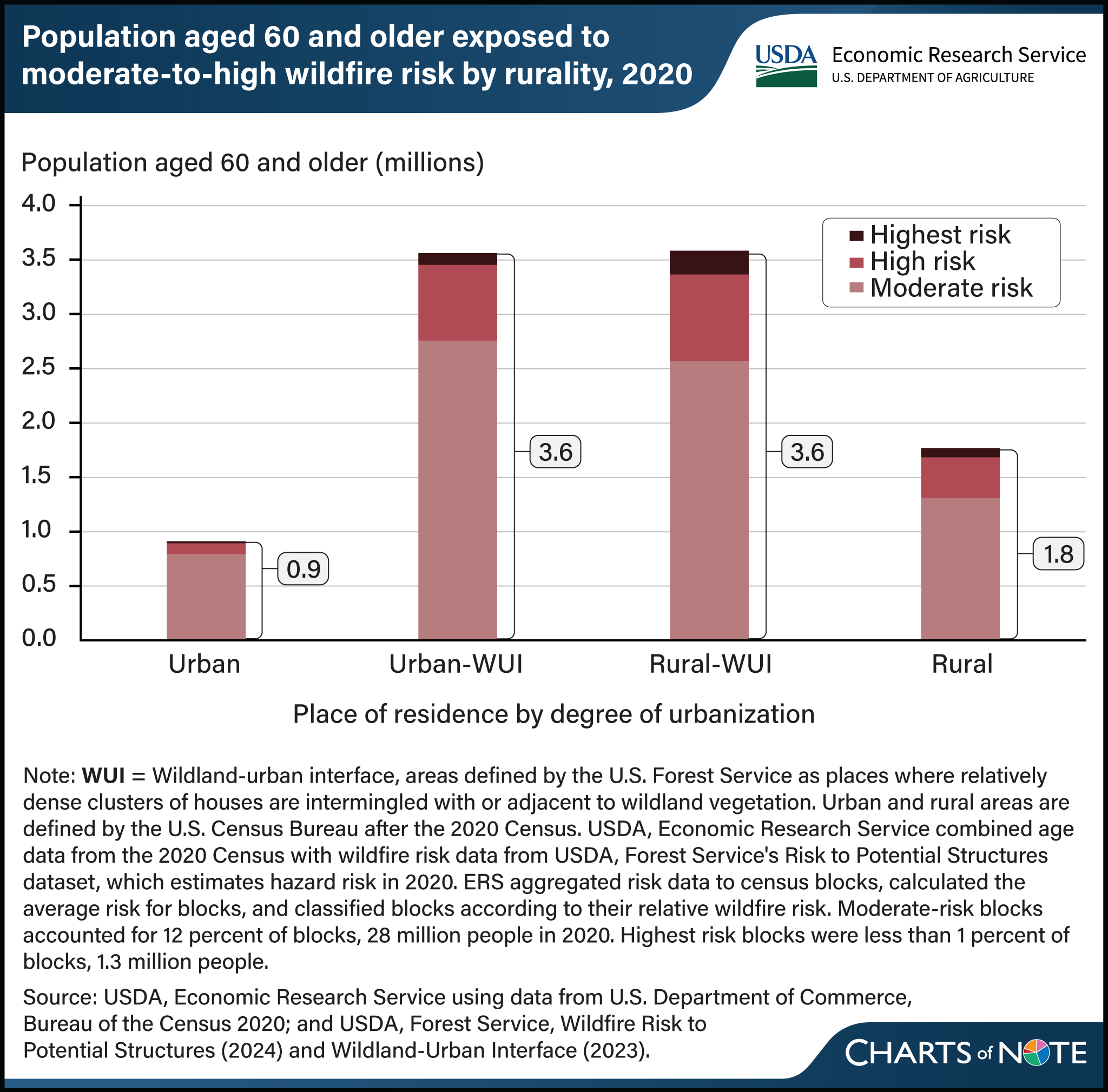Rural areas have more older people exposed to greater wildfire risk
- by Richelle L. Winkler
- 3/24/2025

Nearly 10 million people aged 60 and older lived in areas with moderate-to-high risk of wildfire in 2020. Of those, 5.4 million were in rural areas. Researchers with USDA, Economic Research Service (ERS) examined where the older population (aged 60 and above) lives by wildfire risk and degree of urbanization to find that older people whose homes are exposed to greater wildfire risk are mostly found in rural and Wildland-Urban Interface (WUI) areas. WUI areas are defined by the U.S. Forest Service and include places where relatively dense clusters of houses are intermingled with or adjacent to wildland vegetation. WUI areas can be located in areas defined by the U.S. Census Bureau as urban or rural. Areas that are the most rural, (“rural” in the chart), lack enough housing density to be considered WUI and have small populations, yet they were home to 1.8 million older people exposed to moderate-to-high wildfire risk. WUI areas included more than 7 million older people exposed to moderate-to-high risk who were nearly evenly divided between urban-WUI and rural-WUI. By comparison, fewer than 1 million older people living in urban areas were at an elevated wildfire risk, despite 60 percent of the U.S. population living in these areas. Wildfire risks to communities have increased because of various environmental and human factors, and older people face a greater relative risk of dying in a fire than younger people. This chart appears in the ERS report Aging and Wildfire Risk to Communities, published February 2025.
We’d welcome your feedback!
Would you be willing to answer a few quick questions about your experience?

